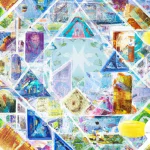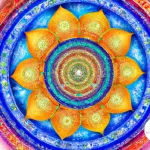The Role of Numerology in Ancient Egyptian CultureUnderstanding the ancient Egyptian culture requires an exploration of its intricate belief systems and practices. One fascinating aspect of their worldview is the significance of numerology in their religious, architectural, artistic, and burial practices. Numerology, the study of the mystical significance of numbers, played a profound role in shaping the rituals and structures of ancient Egypt. By delving into the various aspects of numerology within their culture, we can gain a deeper understanding of the spiritual and symbolic significance that numbers held for the ancient Egyptians. Through the examination of sacred numbers, geometric proportions, artistic representations, burial practices, and mathematical systems, we can uncover the profound role that numerology played in shaping their worldview and society.
Numerology in Ancient Egyptian Religion
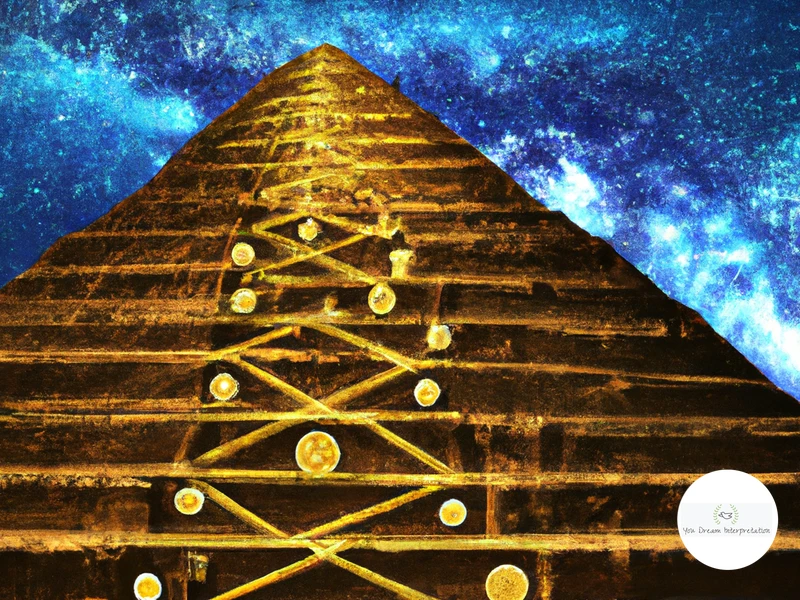
Belief in Divine Numbers:The ancient Egyptians believed that numbers held divine significance, intertwining with the spiritual fabric of their religious practices. Each number had its own symbolic value, representing concepts, deities, and spiritual forces. For example, the number three symbolized the divine trinity of Ra, Amun, and Ptah, representing creation, life, and rebirth. Numerology provided a framework for understanding the hidden meanings behind these numbers and their connection to the gods and the universe. Through the interpretation of numbers, the ancient Egyptians sought to gain insights into their spiritual journey and align themselves with the cosmic energies that governed their existence. Exploring the traits and destiny numbers was an essential part of their spiritual practices, allowing individuals to unlock hidden talents and abilities associated with their life path. The power of numerology shaped the spiritual beliefs and practices of ancient Egyptian religion, permeating their temples, divine texts, and rituals.
Belief in Divine Numbers
In ancient Egyptian culture, a profound belief in divine numbers permeated every aspect of their religious practices. Numbers were considered to possess mystical qualities and were believed to hold the key to understanding the universe and the divine. The ancient Egyptians assigned symbolic meanings to individual numbers, associating them with concepts, deities, and spiritual forces. For example, the number one represented wholeness and unity, symbolizing the concept of the creator god, Ra. The number four was associated with stability and balance, corresponding to the four cardinal directions and the four sons of Horus. The number seven held great significance as well, representing perfection and completion, often linked to the celestial bodies and the days of the week. By deciphering the sacredness of these numbers, the ancient Egyptians sought to engage in a deeper understanding of the divine order and the forces that governed their lives. They believed that by aligning themselves with the qualities and energies represented by these numbers, they could attain spiritual enlightenment and harmony.
The belief in divine numbers influenced various aspects of ancient Egyptian religion. For instance, rituals were performed with specific numerical components to invoke the power associated with certain numbers. Temples and tombs were constructed with precise numerical proportions to bring about spiritual harmony and alignment with the divine. Divine texts, such as the Book of the Dead, contained spells and invocations that incorporated numerological symbolism to guide the deceased through the afterlife.
The ancient Egyptians also believed that one’s date of birth and name carried significant numerical values that could provide insights into their character, destiny, and spiritual path. By using numerological calculations, individuals could unlock hidden talents and abilities associated with their life path. Numerology played a pivotal role in shaping the ancient Egyptian religious worldview and provided a framework for understanding the interconnectedness of the spiritual and material realms.
The Power of Sacred Numbers
- 1 – The number one represented unity and the divine origin. It symbolized the primordial state of existence and the beginning of everything. This sacred number was associated with the sun god Ra, emphasizing his role as the creator.
- 4 – The number four held great importance in ancient Egyptian culture. It symbolized the four cardinal directions (north, south, east, and west) and the four elements (earth, air, fire, and water). Additionally, it represented stability and balance, both in the physical and spiritual realms.
- 7 – Considered a highly spiritual number, seven represented completeness and perfection. It reflected the seven planetary deities and the seven phases of the moon, emphasizing the interconnectedness between celestial bodies and earthly existence. The number seven held significance in rituals and offerings, serving as a symbolic gateway to the divine.
- 9 – The number nine was associated with the concepts of eternity and infinity. It represented the ennead, a group of nine deities, including Osiris, Isis, and Horus. Nine symbolized completion and represented the culmination of a spiritual journey.
- 13 – Despite the modern-day superstitions surrounding the number thirteen, in ancient Egyptian culture, it held a powerful and positive meaning. Thirteen represented transformation and rebirth, closely tied to the lunar calendar and the cycles of the moon. It symbolized the journey of the soul from death to rebirth, signifying regeneration and spiritual growth.
These sacred numbers had a profound impact on the beliefs and practices of the ancient Egyptians. They infused every aspect of life, from religious rituals to architectural design, and were a means to connect with the divine forces. Numerology played a central role in shaping the understanding of the universe, serving as a guide for individuals seeking to unlock their spiritual potential. By exploring the power of numerology to shape destiny, the ancient Egyptians recognized that numbers possessed a mystical power that could influence and guide their lives. They firmly believed that by aligning themselves with the sacred numbers, they could tap into spiritual energies and achieve harmony and balance within themselves and the world around them.
Numerology in Divine Texts
Numerology played a vital role in ancient Egyptian divine texts, such as the Book of the Dead. These texts contained spells, prayers, and instructions for the deceased’s journey in the afterlife. Within these texts, numbers were used to convey symbolic messages and invoke spiritual energies. For example, the number seven held immense significance as it represented completion and perfection. This number frequently appeared in ritual formulas and the measurements of sacred structures. In the Book of the Dead, the deceased often encountered seven gates and had to declare their innocence before each gate. Additionally, the repetition of spells and incantations in multiples of seven reinforced the belief in the power of this sacred number. The inclusion of numerical symbolism in these texts served as a guide for the deceased, ushering them through various stages of the afterlife and helping them attain spiritual enlightenment.
In addition to the number seven, other numbers held specific meanings in divine texts. The number nine, for instance, represented eternity and the Ennead, the group of nine deities, including Osiris and Isis. The number twelve symbolized cosmic order and the twelve hours of the night, while the number forty represented a complete cycle of renewal and transition.
To enhance the mystical aspects of these texts, the placement and repetition of numbers were carefully considered. Sequential repetition, such as three times or seven times, added emphasis and potency to the rituals and spells written in the texts. The numerical patterns within the divine texts reflected the ancient Egyptians’ belief in the interconnectedness of the physical and spiritual realms, providing a roadmap for the deceased to navigate the complex journey into the afterlife.
Numerology in Ancient Egyptian Architecture
Sacred Geometric Proportions:Ancient Egyptian architecture was deeply influenced by numerology, with sacred geometric proportions serving as the foundation for their magnificent structures. The Egyptians believed that specific ratios and dimensions held divine significance and imbued their architecture with spiritual energy. Sacred geometric proportions such as the Golden Ratio, or phi (1.618), were meticulously incorporated into the design of temples, pyramids, and tombs. These proportions were believed to create harmony and balance, connecting the physical structure to the cosmic order. The arrangement of columns, corridors, and chambers followed precise numerical calculations, reflecting the symbolic and mathematical understanding of the ancient Egyptians. By employing these numerological principles, architects sought to create sacred spaces that were not only visually stunning but also infused with spiritual power.
Sacred Geometric Proportions
Sacred Geometric Proportions:Numerology played a significant role in shaping the architectural landscape of ancient Egypt, particularly in the creation of sacred geometric proportions. The ancient Egyptians believed that certain geometric shapes held spiritual and cosmic significance, and incorporating these shapes into their buildings enhanced their connection to the divine. One such shape was the pyramid, with its triangular sides representing the threefold nature of creation. The proportions of the pyramids were also carefully calculated to align with cosmic energies and celestial alignments. The Great Pyramid of Giza, for example, is believed to have been built with a base length that reflects the mathematical ratio of 2:3:4, known as the “Egyptian Triangle.” This ratio was considered harmonious and was believed to contribute to the pyramid’s spiritual power. Additionally, the use of the golden ratio, a mathematical ratio found in nature and art, was prevalent in ancient Egyptian architecture. This ratio, approximately 1.618, was believed to have aesthetic and spiritual significance, creating a sense of harmony and balance in the structures. The incorporation of sacred geometric proportions in ancient Egyptian architecture not only showcased the mastery of their builders but also served as a tangible representation of their connection to the divine.
Numerological Symbolism in Temples and Tombs
Numerological Symbolism in Temples and TombsIn ancient Egyptian culture, temples and tombs were not merely physical structures, but sacred spaces infused with numerological symbolism. The Egyptians believed that the design and layout of these architectural marvels had a direct influence on the spiritual energy within them. The placement of statues, the dimensions of chambers, and even the choice of materials were all meticulously chosen based on numerological principles. For example, the number four had particular significance, representing stability and completeness. This is evident in the construction of temple complexes, where multiple entrances and chambers were often arranged in quadrilateral patterns, reflecting the belief in the divine power of the number four. Additionally, the use of sacred numbers such as seven, representing perfection, and nine, symbolizing rebirth, can be seen in the number of pylons, chapels, or sacred lakes present within these structures. Tomb designs also followed a specific numerological pattern, with burial chambers and corridors aligned in precise measurements to reflect the importance of numerology in the journey to the afterlife. The placement and arrangement of symbolic motifs, hieroglyphs, and religious imagery further reinforced the significance of numerology in these sacred spaces. Through the intricate numerological symbolism embedded within temples and tombs, the ancient Egyptians sought to establish a connection between the physical and spiritual realms, creating spaces that resonated with cosmic harmony and divine energies.
The Role of Numerology in Building Design
The Role of Numerology in Building Design:Numerology played a crucial role in the architectural design of ancient Egyptian structures. The Egyptians believed that the proportions and dimensions of buildings directly influenced their spiritual and cosmic energies. Architectural designs were meticulously crafted to align with sacred geometric proportions, such as the golden ratio, which represented harmony and balance. By incorporating numerological principles, architects aimed to create structures that not only served functional purposes but also resonated with the divine forces. For example, the dimensions and layout of temples were carefully calculated using numerological calculations to ensure that they were in perfect harmony with the cosmic energies and pleasing to the gods. The number symbolism was also highly prevalent, with specific numbers like four representing stability and nine symbolizing completeness. Even the orientation of buildings, such as aligning the entrance with certain celestial bodies, held numerological significance. The inclusion of numerology in building design allowed the ancient Egyptians to create sacred spaces that transcended mere physical structures, serving as conduits for spiritual and cosmic energies.
Numerology in Ancient Egyptian Art
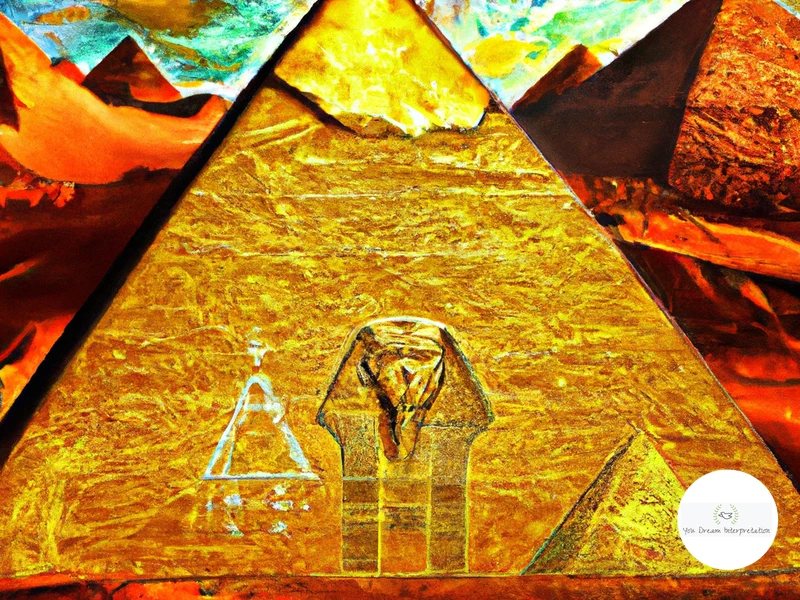
Symbols and Numbers in Artistic Representations:Ancient Egyptian art was not just an expression of aesthetics, but also a medium through which numerological symbolism was conveyed. Artistic representations such as hieroglyphs, sculptures, and murals were rich in symbolic meaning, often incorporating numbers to convey deeper spiritual messages. The use of numerology in ancient Egyptian religion was seamlessly integrated into their art, allowing for the communication of mystical and religious concepts. The ancient Egyptians believed that the placement and arrangement of symbols and numbers in their artwork revealed hidden truths about the cosmos, the gods, and the human condition. Patterns and repetitions of numbers held profound significance, reflecting the interconnectedness of the natural and divine worlds. Through their art, the ancient Egyptians sought to evoke a sense of awe and reverence, bridging the gap between the earthly realm and the realm of the gods.
Symbols and Numbers in Artistic Representations
Symbols and Numbers in Artistic Representations:Ancient Egyptian art is rich with symbolism and numerological significance. Artistic representations such as paintings, carvings, and hieroglyphs were not merely decorative but served as channels for communication with the divine realm. Symbolic elements were carefully incorporated into these artistic works, and numbers played a significant role in conveying hidden meanings. For example, the number four often represented stability and completion, as seen in the four sons of Horus or the four corners of the cosmos. The number seven was associated with wholeness and perfection, depicted in the seven celestial bodies known to the Egyptians. Various animal and deity symbols were also used to represent numerological concepts. The scarab, for instance, represented the number seven and symbolized the concept of creation and eternal life. These artistic representations served multiple purposes, including expressing religious beliefs, recounting historical events, and honoring revered individuals. By understanding the symbolism and numerological patterns in these artworks, we gain insights into the ancient Egyptians’ spiritual worldview and their belief in the interconnectedness of numbers, symbols, and divine forces.
The Significance of Numerological Patterns
The Significance of Numerological Patterns:In ancient Egyptian art, numerological patterns played a crucial role in conveying deeper meanings and symbolism. Artists meticulously incorporated specific numbers and patterns into their artwork to communicate spiritual, mystical, and cultural concepts. For example, the number seven represented completeness and perfection, often seen in depictions of the seven sacred deities or the seven stages of the afterlife journey. The repetition of certain numbers or numerical ratios, such as the Golden Ratio or the Fibonacci sequence, indicated a harmonious balance and aesthetic appeal in their artistic compositions. These numerical patterns were not merely decorative elements but held profound significance to the ancient Egyptians, reflecting the belief in cosmic order and the interconnectedness of all things. By understanding the numerological patterns present in ancient Egyptian art, we gain insight into the cultural values, spiritual beliefs, and symbolisms embedded within their creative expressions.
Magical and Religious Uses of Numerology in Art
Magical and Religious Uses of Numerology in Art: Numerology played a significant role in the creation of art in ancient Egyptian culture. Artists believed that by incorporating specific numbers and symbols into their works, they could harness the spiritual power associated with those numbers. One prominent example of this is the use of the number four, which represented completeness and stability. Artists would often depict deities and pharaohs standing with their arms crossed, symbolizing the four corners of the earth and the four cardinal directions. This not only represented the balance and order of the universe but also imbued the artwork with a sense of divine protection and cosmic harmony. Another example is the inclusion of the number nine, which was associated with the Ennead, a group of nine gods who held significant roles in the divine hierarchy. By including nine figures or elements in their art, such as nine birds or nine flowers, artists sought to invoke the power and blessings of these prominent deities. The ancient Egyptians believed that certain numbers had magical properties and could be used to ward off evil spirits or bring good fortune. For example, the number seven was considered sacred and was often incorporated into amulets and protective charms. These numerological symbols were believed to offer spiritual protection and ensure the well-being of the wearer. The use of numerology in ancient Egyptian art was not only a means of artistic expression but also a way to invoke divine energies and infuse the artwork with spiritual power and symbolism.
Numerology in Ancient Egyptian Burial Practices
Importance of Selective Burial Dates:Numerology played a significant role in ancient Egyptian burial practices, particularly in determining the appropriate dates for burial ceremonies. The ancient Egyptians believed that specific days had numerological significance and would impact the deceased’s journey into the afterlife. They carefully considered the alignment of numbers and celestial events when selecting burial dates. For example, the number nine symbolized completion and was associated with the god Osiris and the journey to the afterlife. Hence, burials often took place on the ninth day of the month. The numerological significance of burial dates was believed to ensure a smooth transition for the deceased and forge a strong connection with the divine. Numerological Significance of Amulets and Funerary Rituals:In addition to burial dates, numerology also influenced the selection and use of amulets and the performance of funerary rituals. Amulets with specific numerical symbolism, such as the number four representing completeness, were placed within the burial chambers to offer protection and aid the deceased on their journey. The rituals performed during the burial process also incorporated numerological principles, aiming to harmonize the spiritual energies and ensure a favorable outcome for the deceased in the afterlife. The ancient Egyptians believed that by adhering to numerological principles in their burial practices, they could establish a spiritual connection and facilitate a successful transition into the realm of the divine.The Afterlife and Numerological Connections:The concept of the afterlife held deep significance in ancient Egyptian culture, and numerology played a crucial role in establishing connections between the living and the deceased. The numerical value of an individual’s name was believed to have a direct influence on their journey in the afterlife. Egyptians often inscribed names and hieroglyphs using numbers to enhance the symbolic meaning and spiritual essence of the individual. The construction of tombs and burials followed strict geometrical and numerical principles, with the alignment of structures reflecting cosmic order and representing the eternal journey of the soul. Numerology in burial practices allowed the ancient Egyptians to maintain a connection with their deceased loved ones and ensure their spiritual well-being in the afterlife.
Importance of Selective Burial Dates
Importance of Selective Burial Dates: The ancient Egyptians placed great significance on the selection of burial dates as part of their funerary practices. They believed that the alignment of the deceased’s birth date with specific auspicious dates had a direct impact on their journey in the afterlife. The process of determining these selective burial dates involved a complex combination of numerological calculations and astrological observations. By consulting the celestial movements and aligning them with the numerical symbolism of specific dates, the ancient Egyptians aimed to ensure a favorable transition and eternal existence for the deceased. These selective burial dates were believed to harmonize with the cosmic forces, facilitating the individual’s reunion with the gods and their transformation into an immortal spiritual entity. The careful consideration of burial dates demonstrates how numerology played a fundamental role in the ancient Egyptian belief in the continuity of life after death and the desire to align physical existence with divine energies in the afterlife.
Numerological Significance of Amulets and Funerary Rituals
Numerological Significance of Amulets and Funerary Rituals: Amulets and funerary rituals held great importance in ancient Egyptian culture, and numerology played a significant role in their design and use. Amulets, small objects worn or carried by individuals, were believed to possess protective and magical powers. The selection of amulets was influenced by numerological considerations, with specific numbers holding symbolic significance. For example, the number seven represented completeness and protection and was associated with the Seven Hathors, goddesses believed to determine a person’s destiny. Amulets were often crafted in different shapes or quantities to align with numerological principles. An example is the scarab amulet, representing the cycle of life and rebirth, which often featured seven carvings or inscriptions.
Funerary rituals were also steeped in numerological traditions. The process of mummification itself was a meticulously planned ritual, with various stages and rituals performed over a period of seventy days, a number associated with the passage from death to the afterlife. The number seventy had significance as it represented the concept of completion and the journey to eternity. Additionally, the Book of the Dead, a collection of religious texts and spells, often included numerological elements. For instance, there were spells specifically dedicated to providing the deceased with knowledge of the significant numbers and their symbolic meanings. These rituals and amulets were believed to assist the deceased in navigating the afterlife successfully and achieving spiritual enlightenment.
To summarize, the numerological significance of amulets and funerary rituals in ancient Egyptian culture demonstrates the deep connection between numbers, spirituality, and the quest for eternal life. The careful selection and use of amulets and the incorporation of numerological principles in funerary rituals reflected the Egyptians’ belief in the power of numbers to protect and guide the deceased in their journey beyond the earthly realm.
The Afterlife and Numerological Connections
The Afterlife and Numerological Connections:
The ancient Egyptians had a deep fascination with the afterlife and believed in the existence of multiple realms beyond death. Numerology played a significant role in their understanding and preparation for the journey to the afterlife. They believed that specific numbers held the power to assist the deceased in their transition and ensure their well-being in the afterlife.
One of the prominent numerological connections in the afterlife beliefs of ancient Egypt was the concept of the soul’s journey through the Duat, the underworld. The Duat was divided into twelve regions or hours, each corresponding to a specific deity and associated with specific numerological values. These numerological connections influenced the rituals and spells performed to aid the deceased in navigating and ascending through the Duat successfully.
Additionally, the Book of the Dead, a collection of funerary texts, utilized numerology extensively. Spells and incantations within the book often contained repetitions of specific numbers, such as multiples of seven or nine, to ensure spiritual protection and guide the soul safely to the afterlife. Each numeric repetition held its own significance and represented different aspects of the journey.
For example, the number seven represented completeness and perfection, reflecting the seven stages of the soul’s journey. The number nine symbolized eternity and the regeneration of life, associated with the nine gods who governed the Duat. By incorporating these numerological connections into the rituals and texts, the ancient Egyptians sought to provide a roadmap for the deceased to navigate the afterlife successfully.
The belief in numerological connections between the afterlife and specific numbers was a fundamental aspect of ancient Egyptian culture. The significance of numbers in guiding the deceased’s journey through the Duat and ensuring their spiritual well-being in the afterlife demonstrates the profound influence of numerology on their beliefs and practices.
Mathematical Systems and Numerology
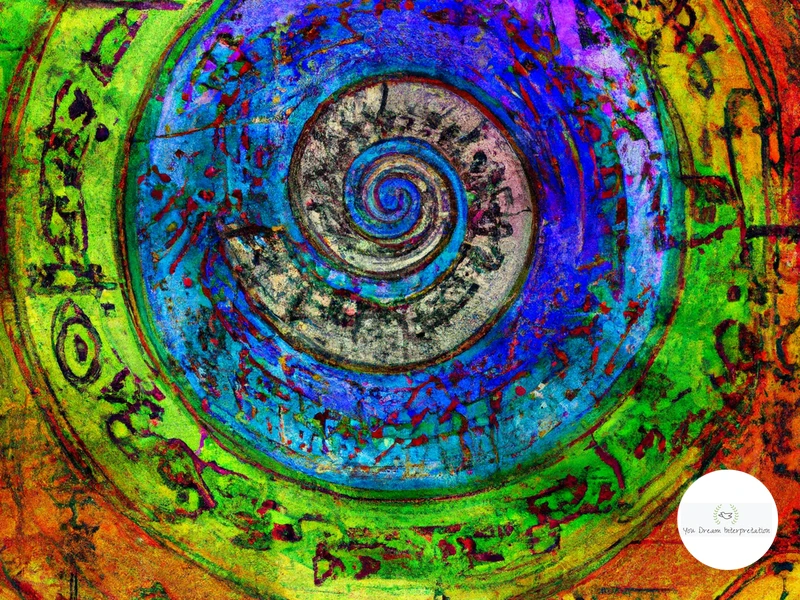
The Role of Numerology in Egyptian Mathematics:Ancient Egypt possessed an advanced mathematical system that intertwined with their understanding of numerology. The Egyptians developed various mathematical concepts and techniques to explore the mystical properties of numbers. One of the most significant influences on their numerical calculations was the Pythagorean theorem, which emphasized the relationship between numbers and geometric proportions. The Egyptians utilized this mathematical knowledge to construct their temples, tombs, and other architectural marvels, ensuring that sacred geometric proportions were maintained. Numerological calculations were also applied in various fields such as astronomy, medicine, and agriculture, where numbers were used to predict celestial events, prescribe medicinal treatments, and optimize agricultural practices. The integration of mathematical systems and numerology allowed the ancient Egyptians to perceive the interconnectedness between the physical world and the spiritual realm, further reinforcing their belief in the divine significance of numbers.
The Role of Numerology in Egyptian Mathematics
- Development of Numerical Systems:
The role of numerology in Egyptian mathematics was instrumental in the development of numerical systems that formed the foundation of their mathematical knowledge. The ancient Egyptians used a decimal system, which consisted of ten fundamental symbols or hieroglyphs representing numbers from one to nine and a symbol for ten. These numerals were used extensively in various mathematical calculations, including measurements, geometry, and accounting. Numerology played a crucial role in assigning symbolic meanings to these numbers, creating a deeper connection between mathematics and spirituality in ancient Egyptian culture. - Astrology and Numerical Interpretations:
Numerology in Egyptian mathematics was also closely tied to astrology. The Egyptians believed that celestial bodies influenced their daily lives and events. They developed a system called ‘harpedonaptae,’ which involved marking specific measurements on the ground to align with the positions of heavenly bodies. These measurements and alignments were calculated and interpreted using numerological principles, providing insights into the cosmic forces at play. This astrological numerology helped the ancient Egyptians understand the interconnectedness of the universe and make predictions about various aspects of their lives with the guidance of numbers and celestial bodies. - Symbols and Mathematical Concepts:
Numerology influenced the symbolism and concepts used in Egyptian mathematics. For example, the number one symbolized unity and represented the concept of a whole. The number two represented duality, such as male and female, day and night, and was associated with balance and harmony. The number four was considered a sacred number, representing stability and the four cardinal directions. These symbolic associations influenced the mathematical concepts developed by the ancient Egyptians, such as fractions, geometric shapes, and measurements.
Pythagorean Influence on Numerology
Pythagorean Influence on Numerology: Pythagoras, the ancient Greek mathematician, philosopher, and mystic, had a significant influence on the development of numerology, including its impact on ancient Egyptian culture. Pythagoras believed that numbers were not merely symbols but had inherent qualities and vibrations that could be used to understand the fundamental nature of the universe. His teachings regarding the mystical properties of numbers resonated with the ancient Egyptians, who incorporated elements of his philosophy into their own numerological practices. The Pythagorean numerological system, which assigns numerical values to letters and words, influenced the ancient Egyptians’ understanding of the sacredness and hidden meanings of words and names. It allowed them to derive deeper insights by analyzing the numerical values associated with different words and names. This Pythagorean influence extended to various fields, such as medicine, where numerological calculations were utilized to decipher the underlying causes of illnesses and prescribe remedies. The integration of Pythagorean principles into ancient Egyptian numerology enriched their spiritual practices and provided a more intricate understanding of the mystical properties of numbers.
Use of Numerological Calculations in Various Fields
- Astronomy and Astrology: Numerology played a crucial role in the field of astronomy and astrology in ancient Egypt. Astronomers and astrologers studied the celestial movements and positions of stars, planets, and constellations, applying numerological calculations to interpret their significance. They believed that these cosmic phenomena held insights into the fate and destiny of individuals and the kingdom as a whole.
- Medicine and Healing: Numerology was also integrated into the field of medicine and healing practices. Ancient Egyptian physicians used numerological calculations to determine the underlying causes of illnesses and the most effective treatments. They believed that certain numbers contained healing vibrations and energies, which could be harnessed to restore balance and harmony to the body and mind.
- Divination and Prophecy: Numerological calculations were frequently used for divination and prophecy. Diviners and seers would use numbers to gain insights into future events and make predictions. They employed various methods, such as adding up the digits of important dates or names to unveil hidden meanings and potential outcomes.
- Architecture and Engineering: Numerology played a prominent role in the field of architecture and engineering. Ancient Egyptian architects used mathematical calculations and sacred proportions based on numerological principles to design temples, tombs, and other structures. They believed that aligning their designs with numerological symbolism would imbue the buildings with spiritual energy and ensure their structural integrity.
- Political and Social Systems: Numerology also influenced the political and social systems of ancient Egypt. The kings and pharaohs relied on numerological calculations to legitimize their reign and maintain harmony in their kingdom. The selection of auspicious dates for important events, such as coronations and festivals, was determined through numerological analysis.
- Personal and Spiritual Growth: Ancient Egyptians utilized numerology for personal and spiritual growth. Individuals would seek the guidance of numerologists to understand their life paths, personality traits, and potential challenges. This self-knowledge empowered individuals to make informed decisions, cultivate self-awareness, and strive for personal and spiritual development.
Conclusion
Conclusion:
In conclusion, numerology played a fundamental role in various aspects of ancient Egyptian culture. From their religious beliefs to architectural designs, artistic expressions, burial practices, and mathematical systems, numerology was intricately woven into the fabric of their society. The ancient Egyptians viewed numbers as sacred entities with profound symbolism and mystical significance. These numbers were believed to connect individuals with divine forces and cosmic energies, guiding their spiritual journey and shaping their destiny. Through the study of numerology, the ancient Egyptians sought to unlock hidden truths, understand the universe, and align themselves with the gods. Numerology provided them with a framework for interpreting the world around them and establishing a deeper connection with the spiritual realm.
In ancient Egyptian religion, numerology brought a deeper understanding of the gods and their attributes, allowing individuals to tap into the divine energies for guidance and protection. Sacred numbers were incorporated into religious rituals, temple designs, and hieroglyphic texts, symbolizing concepts, deities, and cosmic forces. The precise calculations of geometric proportions ensured that the sacred architecture perfectly harmonized with the divine realm, creating a space for spiritual worship and transcendence. Numerology also influenced the development of mathematical systems in ancient Egypt, providing a basis for measurement and calculation.
In the realm of ancient Egyptian art, numerology played a vital role in the creation of symbolic representations and artistic expressions. Numbers and symbols were used to convey meaning, encode messages, and invoke magical and religious powers. Artworks often incorporated numerological patterns, aligning with the cosmic order and reflecting the divine connections.
The significance of numerology extended to ancient Egyptian burial practices as well. Selective burial dates and the presence of numerological amulets ensured a successful journey to the afterlife. Funerary rituals incorporated specific numbers to ensure the deceased’s successful transition and eternal existence in the kingdom of Osiris.
The influence of numerology in ancient Egyptian culture can be seen as the precursor to the development of more complex mathematical systems, such as the Pythagorean theorem. Numerological calculations were applied in various fields, including architecture, engineering, and astronomy, showcasing the practical application of this mystical practice.
Overall, numerology in ancient Egyptian culture served as a bridge between the physical and the spiritual realms, shaping their belief systems, architectural designs, artistic expressions, burial practices, and mathematical systems. It provided a deeper understanding of the universe, the divine forces, and the individual’s place within the cosmic order. The rich and intricate role of numerology in ancient Egyptian culture is a testament to the significance of numbers as powerful symbols and the eternal quest of humanity to uncover the hidden meanings and connections in the world around us.
Frequently Asked Questions
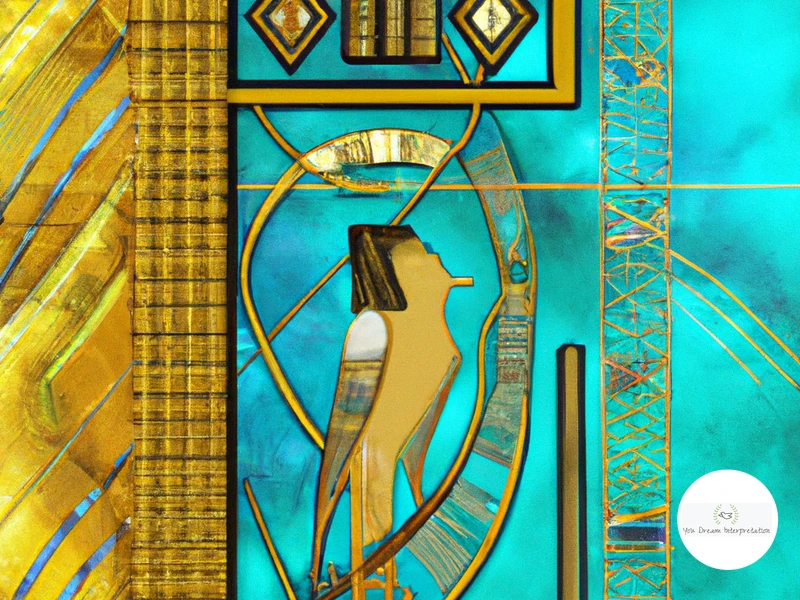
How did numerology influence ancient Egyptian religious practices?
Numerology played a profound role in shaping ancient Egyptian religious practices. It provided a framework for understanding the symbolic meanings of numbers, connecting them to the gods and the universe. By studying numerology, the ancient Egyptians sought to gain insights into their spiritual journey and align themselves with cosmic energies.
What were some of the sacred numbers in ancient Egyptian culture?
Ancient Egyptians attributed sacred meaning to various numbers. Some of the significant ones include the number three, representing creation, life, and rebirth; the number seven, symbolizing completeness and perfection; and the number nine, associated with magic and divine power.
How were sacred numbers incorporated into ancient Egyptian divine texts?
Ancient Egyptian divine texts, such as the Book of the Dead, frequently incorporated sacred numbers. These numbers were used to invoke specific spiritual forces and guide the deceased through the afterlife. Symbolic numbers were believed to hold the key to accessing divine knowledge and protection.
What role did numerology play in ancient Egyptian architecture?
Numerology influenced the design and construction of ancient Egyptian architecture. Sacred geometric proportions, such as the use of the golden ratio, were employed to create harmonious and spiritually significant structures. Numerological symbolism was incorporated into the layout, orientation, and dimensions of temples and tombs to align them with cosmic energies.
How did numerology influence ancient Egyptian art?
Numerology played a significant role in ancient Egyptian art. Symbols and numbers were incorporated into artistic representations to convey deeper meanings. Numerological patterns were utilized to depict specific themes, such as fertility, abundance, or divine ancestry. Additionally, numerology was seen as a means to infuse magical and religious symbolism into art.
What was the importance of selective burial dates in ancient Egyptian burial practices?
In ancient Egyptian burial practices, selecting specific burial dates held great importance. Numerological calculations were conducted to determine auspicious dates that aligned with the deceased individual’s destiny and spiritual journey. It was believed that being buried on an auspicious date would ensure a favorable afterlife.
How did numerology connect to the afterlife in ancient Egyptian culture?
Numerology played a crucial role in the ancient Egyptian belief system surrounding the afterlife. Certain numbers held specific meanings and were believed to facilitate the deceased’s journey to the afterlife. Numerological calculations guided funerary rituals and the placement of amulets to protect and empower the deceased in their journey beyond death.
What influence did Pythagoras have on numerology in ancient Egypt?
While there is no direct evidence of Pythagoras’ influence on ancient Egyptian numerology, his teachings on the mystical properties of numbers align with the ancient Egyptian belief system. Pythagoras’ philosophy and mathematical concepts likely shared common ground with the numerological practices of ancient Egypt.
How did numerology affect ancient Egyptian mathematics?
Numerology had a significant impact on ancient Egyptian mathematics. The Egyptians employed a decimal numerical system and utilized mathematical calculations to explore the symbolic and spiritual aspects of numbers. Numerical calculations were used in areas such as astronomy, geometry, and architecture, intertwining mathematics with the mystical significance of numbers.
How does numerology continue to influence modern cultures?
Numerology continues to influence modern cultures in various ways. It is practiced as a form of divination and self-discovery, with individuals using numerological calculations to gain insights into their personalities, life paths, and future prospects. Additionally, numerology remains a source of inspiration in fields such as art, design, and architecture, where the symbolic meanings of numbers are incorporated into creative expressions.
References
- Mathematics And Numerology
- Reflections of Number symbolism on Egyptian sacred …
- Numerology In Egyptian Myth Explained (And Why 3 Is So …
Frequently Asked Questions

What is numerology?
Numerology is the belief in the mystical and symbolic significance of numbers and their influence on various aspects of life.
How did numerology play a role in ancient Egyptian religion?
Numerology played a significant role in ancient Egyptian religion, as it was believed that certain numbers held divine and cosmic power.
What were the sacred numbers in ancient Egyptian culture?
The ancient Egyptians considered the numbers 3, 4, 7, 9, and 12 to be particularly sacred due to their symbolic and mystical significance.
Did numerology have a role in ancient Egyptian architecture?
Absolutely! Numerology played a crucial role in ancient Egyptian architecture, influencing the design and layout of temples and tombs.
What are some examples of numerological symbolism in temples and tombs?
The layout of temples and tombs often followed sacred geometric proportions and featured specific numbers believed to bring divine blessings and protection.
How did numerology influence ancient Egyptian art?
Numerology had a profound impact on ancient Egyptian art, with symbols and numbers being intricately woven into artistic representations to convey deeper meanings.
What role did numerology play in ancient Egyptian burial practices?
Numerology played a crucial role in ancient Egyptian burial practices, where selective burial dates and numerological calculations were used to ensure a smooth journey to the afterlife.
What were some numerological symbols and rituals associated with funerary practices?
Amulets with specific numerological significance, as well as funerary rituals involving numerical patterns, were believed to offer protection and help in the afterlife.
Were there any connections between numerology and ancient Egyptian mathematics?
Absolutely! Numerology had a direct connection to ancient Egyptian mathematics, as numeric calculations were used in various fields like astronomy, engineering, and medicine.
Did Pythagorean influence play a role in ancient Egyptian numerology?
While the direct influence of Pythagorean teachings on ancient Egyptian numerology is debatable, the concept of sacred numbers and their mystical qualities was akin to Pythagorean beliefs.




